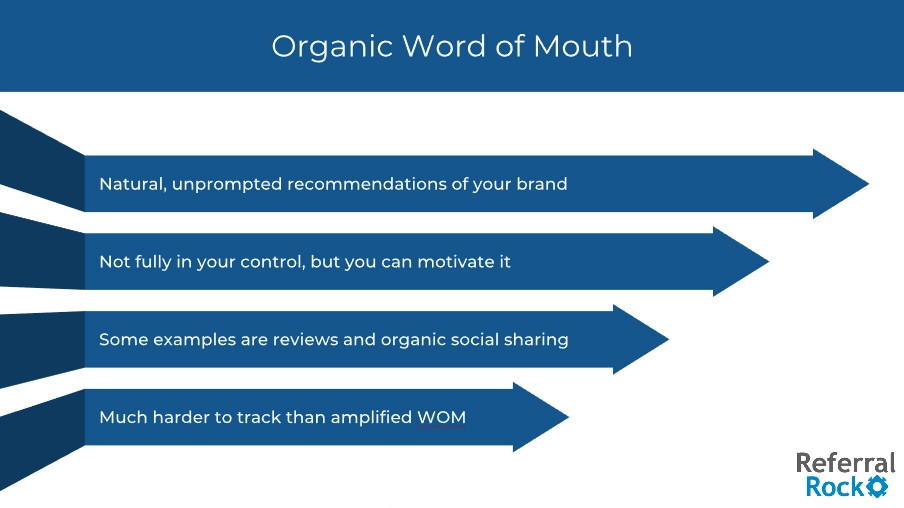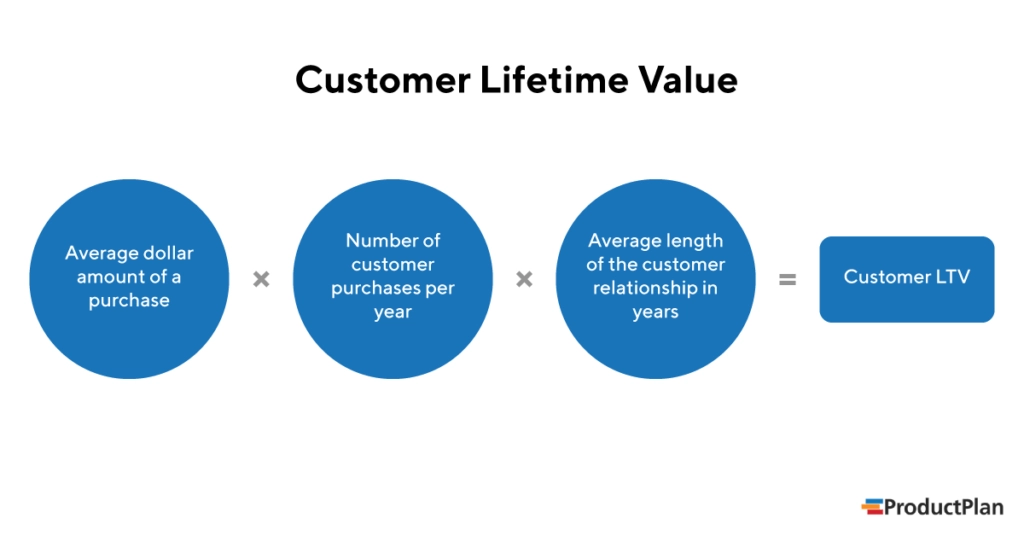Let’s explore what word-of-mouth marketing is, how it works, why it’s so valuable, and how you can apply it to your business!
Have you ever gone to a restaurant or bought a product because someone you know recommended it to you?
Word-of-mouth recommendations are incredibly powerful and hold enormous influence on consumers. If you can tap into word-of-mouth marketing, it could be one of the best things your business ever does.
This guide explores what word-of-mouth marketing is, how it works, and how you can apply it to your business.
- What is Word-of-Mouth Marketing?
- Benefits of Word-of-Mouth Marketing?
- How to Use Word-of-Mouth Referrals in Your Marketing Strategy
- What are Some Examples of Word-of-Mouth Marketing?
- Building Your Word-of-Mouth Marketing Strategy
- Ready to Start Using Word-of-Mouth Marketing for Your Business?
What is Word-of-Mouth Marketing?
Word-of-mouth marketing (WOM) is a strategy that relies on people sharing their positive experiences and opinions about a product, service, or brand with others. As 88% of consumers trust their friends’ recommendations over traditional media, word-of-mouth marketing is extremely valuable.
Word-of-mouth marketing occurs when satisfied customers voluntarily spread the word about their satisfaction, either in person or through various communication channels like social media, online reviews, or personal recommendations. While this is mostly out of the business’s control, there are certain tactics you can use to increase the chances of these referrals.
Word-of-mouth marketing creates a chain reaction of interactions. Companies can encourage word-of-mouth by giving people a reason to talk, like surpassing expectations or sharing insider knowledge.
They can also provide ways for consumers to easily share information and engage with them through excellent customer service, especially on social media.

It’s also important to understand the difference between organic WOM (out of your control) and amplified WOM (tactics that you push).
Benefits of Word-of-Mouth Marketing
Word-of-mouth recommendations can result in some of the most valuable marketing for any business.
Firstly, it builds trust and credibility since people are more likely to trust recommendations from friends and family.
Word-of-mouth marketing also generates positive buzz and increases brand awareness as satisfied customers share their experiences with others.
Word-of-mouth marketing can lead to cost savings since it relies on organic, unpaid promotion. Your business doesn’t necessarily need to invest in it.
It can also result in higher customer acquisition and customer retention rates since referrals often bring in loyal customers.
Word-of-mouth marketing also helps businesses tap into new audiences and target markets.
Overall, it’s a powerful strategy that leverages the influence of personal recommendations to drive business growth.
How to Use Word-of-Mouth Referrals in Your Marketing Strategy.
While you have less control over word-of-mouth marketing in your business, it is still possible to actively pursue and encourage these referrals.
Here are some tactics and best practices to follow to get this right:
- Provide exceptional products or services: Offer high-quality experiences that exceed customer expectations and leave them satisfied. This is essential for generating any kind of customer referrals.
- Encourage and incentivize referrals: Actively request referrals from happy customers and consider offering rewards or incentives for successful referrals. You’ll need to use a referral marketing solution to help you do this.
- Cultivate brand advocates: Identify your most loyal customers and engage with them to turn them into enthusiastic brand advocates who will willingly share their positive experiences. This may involve some outreach.
- Leverage online reviews and testimonials: Encourage satisfied customers to leave reviews on relevant platforms, such as review sites or social media, which can influence potential customers. After all, word-of-mouth referrals are a form of social proof.
- Engage on social media: Foster a strong social media presence and actively interact with customers, responding to their comments, questions, and concerns promptly.
- Create shareable content: Develop engaging and shareable marketing content that provides value to customers, making them more likely to share it with their networks.
- Collaborate with influencers: Partner with influencers or industry experts who align with your brand to amplify word-of-mouth referrals through their networks. Even though it’s paid for, this is still a kind of referral.
- Monitor and respond to feedback: Regularly monitor customer feedback, both positive and negative, and respond appropriately. Addressing concerns and providing exceptional customer service can further encourage positive word-of-mouth.
Remember, word-of-mouth referrals thrive on customer satisfaction and trust. By consistently delivering exceptional experiences and actively nurturing customer relationships, you can harness the power of word-of-mouth to enhance your marketing efforts.
So, if you’re not making your customers happy first, forget about word-of-mouth referrals.
What Are Some Examples of Word-of-Mouth Marketing?
What does word-of-mouth marketing actually look like? Here are some examples of different ways businesses can use it.
Customer Reviews and Testimonials
When customers leave positive reviews or share testimonials about a product or service, it can influence others to try it out based on their recommendations. This is a form of word-of-mouth marketing that your business can share with potential customers.
Social Media Sharing
When individuals share their positive experiences or endorse a brand on social media platforms, it can reach a wide audience and generate interest.
Again, you can be in control of resharing this social media content, helping you make these referrals more visible.
Influencer Recommendations
Influencers, who have a significant following and credibility in specific niches, can promote products or services through their content and personal endorsements.
Working with influencers is incredibly valuable for any business, and can help you reach many new audiences.
Referral Programs
Companies offer incentives or rewards to customers who refer others to their products or services, motivating them to spread the word to their friends, family, or colleagues.
Running referral marketing campaigns takes hardly any effort. Yet, it can help your business generate a lot more customers.
Viral Campaigns
Engaging and shareable content, such as videos, memes, giveaways, or challenges, can go viral and generate buzz as people share them with their networks, creating widespread awareness.
Personal Recommendations
When individuals personally recommend a product or service to their friends, family, or coworkers based on their positive experiences, it can lead to new customers. This is incredibly valuable, but your business has the least control over it.
Offline Word-of-Mouth
Conversations between people in social gatherings, networking events, or casual settings can result in recommendations and discussions about products or services.
Building Your Word-of-Mouth Marketing Strategy
Now that you know what word-of-mouth marketing is, how can you apply it to your business?
While this is not always as straightforward as other marketing tactics, there are a few key steps you can follow to help your business generate referrals. Let’s break these down.
Create a Referral Program
Implement a referral marketing strategy that incentivizes happy customers to advocate for your brand in exchange for rewards. This method can generate organic word-of-mouth promotion while minimizing costs.
Set Up Word-of-Mouth Triggers
Create memorable experiences or emotions that make people want to talk about your brand. This can be achieved by going the extra mile for customers, demonstrating empathy, or showing creativity.
Use Visual Triggers
Design visually appealing experiences that encourage customers to take photos and share them on social media.
Just like “Instagrammable” restaurants, create an aesthetically pleasing environment that people want to showcase. Ever seen restaurant customers take photos next to a neon sign or a wall of roses? These are perfect social-proof traps!
Do or Create Something Unique
Stand out from the competition by offering a unique product, using a different business model, or challenging industry norms. Differentiation can be a catalyst for word-of-mouth marketing.
Evoke Emotions
Connect with people’s emotions to generate shares and engagement.
For example, Dove’s #ShowUs campaign resonated with audiences by promoting inclusivity, making them feel part of a larger movement.
Encourage User-Generated Content (UGC)
Foster UGC by hosting giveaways or tying rewards to customers sharing pictures or videos of your products. UGC builds trust through social proof, as people trust content created by other consumers.
Push Ratings and Reviews
Actively collect and display honest customer reviews across various platforms. Positive reviews act as modern-day word-of-mouth, influencing potential customers’ decision-making process.
Consider Customer Lifetime Value (LTV)
Understand the average revenue (LTV) each customer brings over their relationship with your business. Align your word-of-mouth initiatives with this value to ensure they are cost-effective and beneficial.

Ready to Start Using Word-of-Mouth Marketing for Your Business?
No matter what type of business you run, word-of-mouth marketing will be one of the most valuable things you could ever get right.
To do this, you’ll need to use a referral marketing platform. Viral Loops is one of the best options, making it easy to set up all kinds of referral marketing campaigns to help you generate these valuable referrals.
Get in touch if you’re interested in seeing how we can set your business up with referral marketing, and other marketing tools to take your business growth to the next level.

